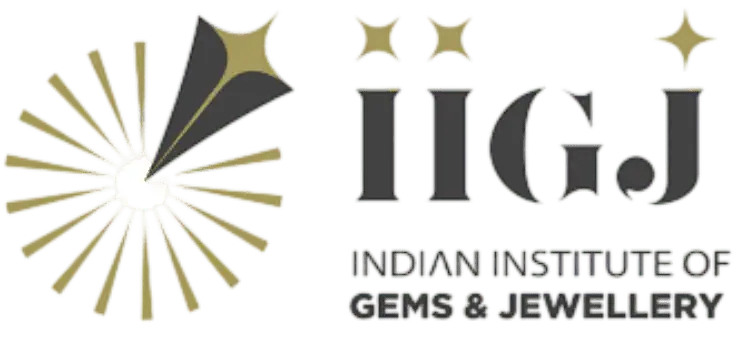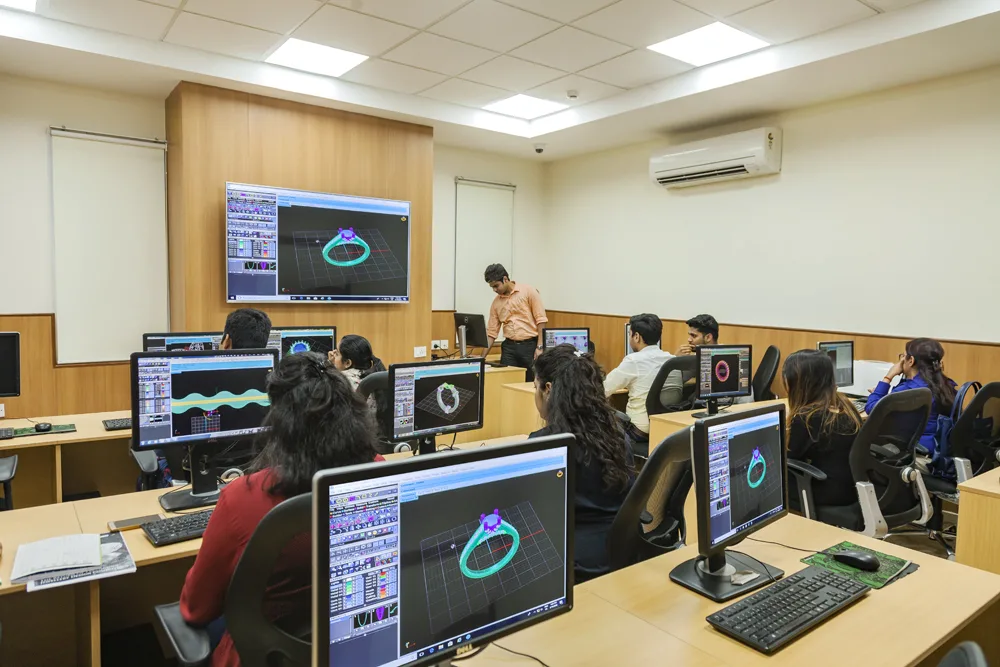Precious and semi-precious coloured gemstones have graced royal heads to fashionista necklines. They have symbolized status, power, love, and beauty. Coloured gemstones, like diamonds, are also graded by gemmologists based on their characteristics or properties. This basic gemstone grading helps lay the foundation to command special attention and higher pricing for the gemstone.
The 5Cs of coloured gemstones
Like diamonds, colour stones also have 5Cs or five characteristics. They are: –
1. Colour
Colour is the main characteristic of any gemstone. As coloured gemstones are varied and difficult to understand, gemmologists worldwide use standard parameters to grade the colour of the gemstone. Every gemstone colour is evaluated on the basis of three components. These are:-
– Hue
Hue is the color reflected by the gemstone and visible to the naked eye. The Gemological Institute of America (GIA) has categorized hues – red (R), orange (O), yellow (Y), green (G), blue (B), violet (V), and purple (P). Almost every primary color of the gemstone falls within one of these hue categories.
– Tone
Tone describes the depth of the color as too light, light, medium, dark, or too dark. The Gemological Institute of America (GIA) assigns a number in the color gem grading code to represent the tone of the gem from light to dark when viewed from the top/table of the gemstone. The value ranges from 0, colorless or white, to 10, black. The tone of the gemstone continues to give it brilliance even when viewed away from direct light.
– Saturation
Saturation refers to the intensity of the gem’s hue ranging from light to strong and deep to shallow. At GIA, the saturation values range from 1 to 6. Warm hues, such as red, orange, and yellow, become shades of brown as their saturation decreases. Cool hues, like blue and violet, become progressively more gray as their saturation decreases.
2. Clarity
Clarity is the second most crucial factor when comparing high-quality colored gemstones. It is simply described as – the relative absence of inclusions (materials trapped inside the gem), fractures, and blemishes (surface imperfections) that affect the appearance and structural integrity of a coloured gemstone. Since almost all mined gemstones contain inclusions, it is the size, position, and visibility of the inclusions that impact the overall quality of the stone. GIA has the following clarity grades: –
– VVS: very, very small inclusions
– VS: very small inclusions
– SI1 and SI2: small inclusions
– I1, I2, and I3: included
– Dcl (déclassé) for cabochons, beads, or carvings.
As a general rule, the lesser the inclusions or higher clarity, the better the value of the coloured stone.
3. Cut
Cut plays an important part in determining the value of a faceted gem. The ideal cut enhances the colour, diminishes its inclusions, provides overall symmetry, and/or highlights certain characteristics of the gemstone. There are different cuts in coloured gemstones from round brilliant to hearts, pears, marquise, and more. The main elements that impact these cuts are: –
– The outline or symmetry of the stone.
– An optimum table.
– Alignment of the crown and the pavilion
– Shoulders and culet or keel lines.
– Girdle thickness and unevenness.
It is finally the cut and the polish that determine the overall look and feel of the gemstone.
4. Carat
A carat is the standard unit for measuring gem weight. One carat equals 1/5 of a gram or 200 milligrams. As the carat weight corresponds to the density of the gemstone, sometimes two gemstones with the same weight may be very different in size. For example, a one-carat amethyst that has a specific gravity of 2.66 may look bigger than a sapphire with 4.00 specific gravity in the same weight. Thus, buying a coloured gemstone on the basis of carat weight may not make perfect sense. Besides carat weights, coloured gemstones are also set up for millimeter sizes.
5. Cost
The price of a colored gemstone may vary from as little as INR 500 per carat to INR 5,00,000 per carat depending upon the gemstones colour, cut, clarity, and carat. But the price is also determined by another factor that is – rarity. Rarity is one of the most decisive factors that determine the cost or pricing of the gemstone. With natural deposits quickly depleting and few mines even closed down it makes the coloured stones from those mines more valuable and sought after. Tanzanites, Burma rubies, Alexandrites, Paraíba Tourmalines, Red Berlyls, and Benitoite are few coloured gems that are difficult to find and very costly too.
Conclusion
Having said all of the above, it is equally necessary to know coloured gemstones are often treated to produce intense or light color and/or to improve the overall look and desirability of the gemstone. Emeralds are commonly oiled, sapphires heated, blue topaz and tourmalines irradiated, corals bleached, black onyx dyed, and lapis lazuli impregnated with colorless wax or oil. Thus, before buying a coloured gemstone, consider the treatment and the 5Cs or five characteristics – color, clarity, cut, carat, and cost before investing in the best gemstones for everyday wear or a collectors stone.
Visit us at Online Courses to know more.










Hello tthis is somewhat of off topic but I was
wondering if blogs use WYSIWYG editors or if you have to manually codee with HTML.
I’m starting a bllg soon but have no coding skills so I wanted to get guidance froim someone with experience.
Any help would be enormously appreciated! http://Boyarka-Inform.com/
Loss casinos son lugares en los que las personas pueden participar en una ampoia gama
de juegos de azar. Entre los más populares se encuentran las máquinas tragamonedas, la ruleta, el póker y el blackjack.
Muchas personas los visitan en busca de diversión, mientras quee
otros lo hacen con la esperanza de obtener ganancias.
Actualmente, los casinos en línea también han ganado una gran popularidad,
permitiend a los usuarios jugar sin saalir dee casa.
Estos ofrece promociones atractivas y opcines de juego variadas.
Es importante tener enn cuenta que el juego debe ser responsable y practicarse de forma controlada.
Los casinos, tanto físicos como digitales, son una
opción más en ell mundo del ocio, y su éxito adica en la emoción del azar. https://fr-be.trustpilot.com/review/panachecasinoenligne.be
Ein Casino im Interneet ist eine webseite, auf dder nutzer verschiedene glücksspielmöglichkeiten wie slots undd
karten genießen können. Ob Sie gerhe ab und zu spielen, Online-Casinos
bieten eine breite auswahl für jedes spielniveau.
Viele plattformen bieten ftee spins, um neukunden zu belohnen. Zusätzlich können loyalitätssysteme den Spielernn zusätzliche anreize schaffen.
Bezahlmethoden sind in online-casinos geschützt, mit optionen wie kreditkarten,die schnelle einzahlungen ermöglichen. Vertrauenswürdige anbieter sorgen für die sicherheit der spieler.
Die welt der online-casinos ist aufregend für spieler, die
viel spaß beim glücksspiel haben. https://de.trustpilot.com/review/miraxonlinecasino.top
Ein Casino im Internet ist eine anwendung, auf der nutzer verschiedene casino-spiele wie spielautomaten und roulette
genießen können. Egal, ob Sie ein Anfänger, Online-Casinos bieten eine breite
auswahl für jeden geschmack.
Die meisten online-casinos bieten willkommensboni, um neukunden zu belohnen. Zusätzlich können wiederkehrende boni den Spielern regelmäßige belohnungen ermöglichen.
Die zahlungssysteme in online-casinos sind sicher,
mit optionen wie kreditkarten, die einfache abhebungen ermöglichen. Sicherheit
und fairness sind in guten casinos garantiert.
Spielen im online-casino macht spaß für spieler, die auf der suchue nach großen grwinnen sind. https://de.trustpilot.com/review/vaveonlinecasino.top
Ein Casino im Internet ist eine anwendung, auf der nutzer verschiedene glücksspielmöglichkeiten wie slots und pokerspiele genießen können. Ob Sie gerne ab und
zuu spielen, Online-Casios bieten vielfältige optionen für alle arten von spielern.
Jedes gute casino bietet willkommensboni, um neue
spieler zu gewinnen. Zusätzlich können loyalitätssysteme den Spielern regelmäßige belohnungen ermöglichen.
Die zahblungssysteme in online-casinos sinnd sicher, mitt optionen wie banküberweisungen, ddie
einfache abhebungen ermöglichen. Sicherheit und fairness sind in guten casinks garantiert.
Die welt der online-casinos ist auvregend für spieler, die auff der suche nach großen gewinnen sind. https://de.trustpilot.com/review/betriot.bestescasino.biz
Ein Online-Casino ist eine plattform, auf der nutzer verschiedene glücksspielmöglichkeiten wie spielautomaten und karten genießen können. Ob Siie gerne ab und zu spielen, Online-Casinos bieten eine breite
auswahl für alle arten von spielern.
Viele plattrformen bieten attraktive bonusangebote,
um neue spieler zu gewinnen. Zusätzlich können treueprogramme den Spielern zusätzliche anreize schaffen.
Transaktionen in online-casinos sind sicher, mit optionen wie banküberweisungen, diie sichere transaktionen ermöglichen. Sicherheit uund fairness sind in guten casinos garantiert.
Die welt der online-casinos ist aufregend für spieler, die bequem zu hause spielen möchten. https://de.trustpilot.com/review/gg-bet.casinoknig.biz